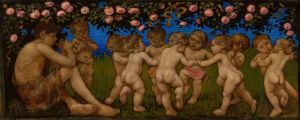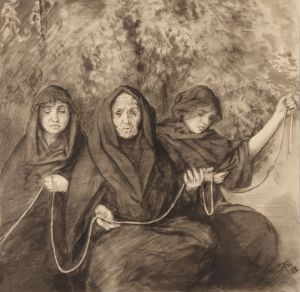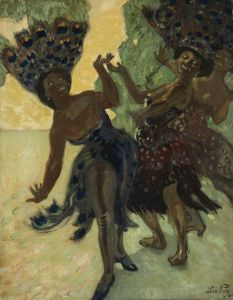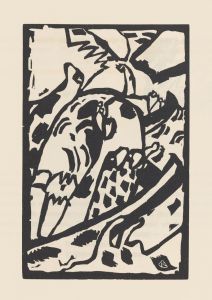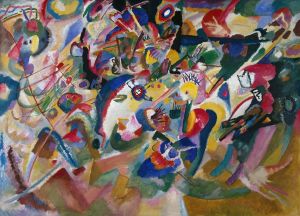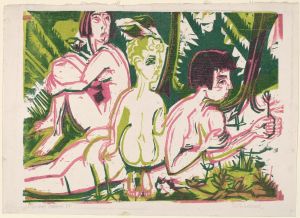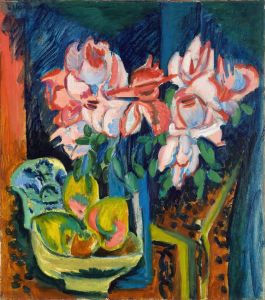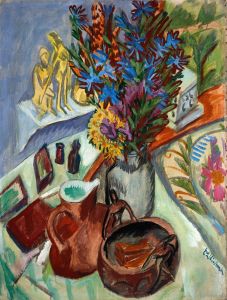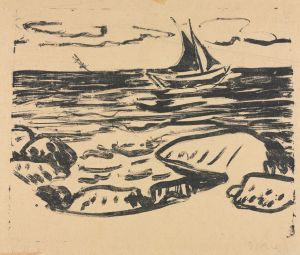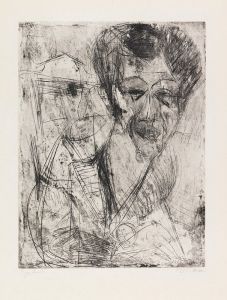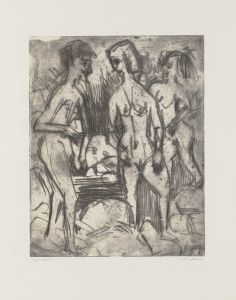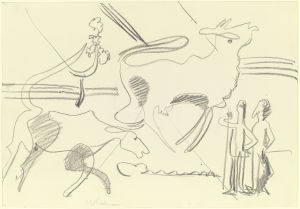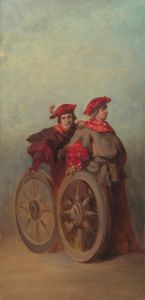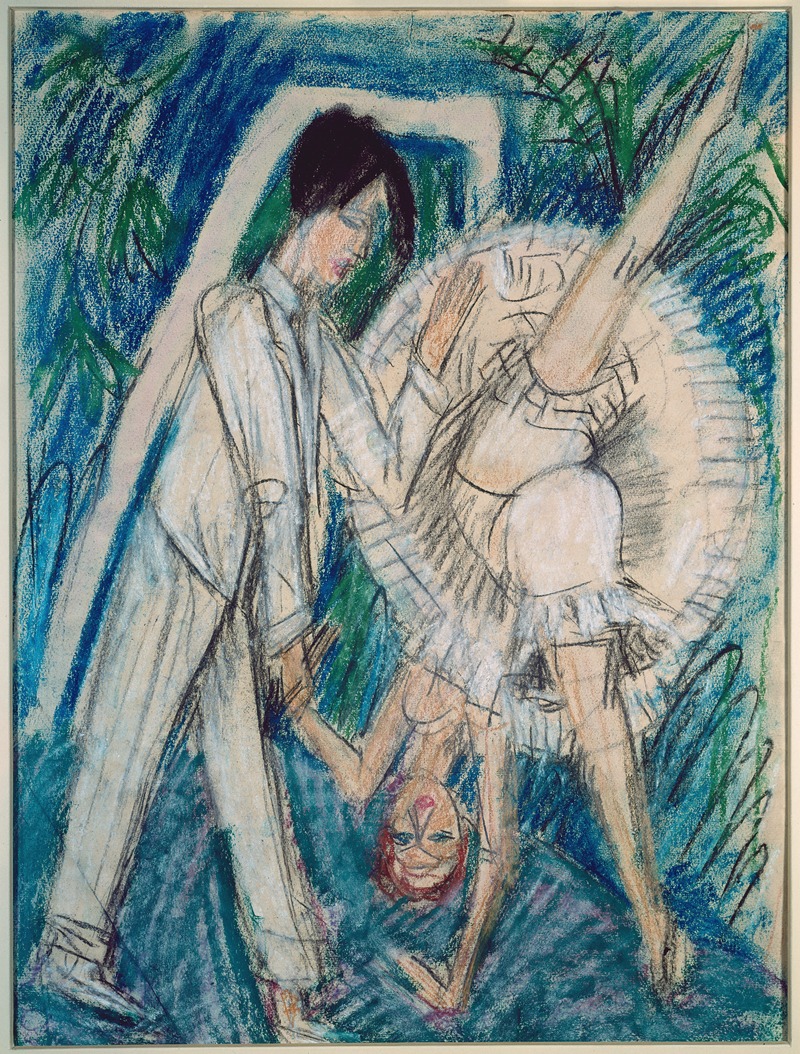
Dancing Couple
A hand-painted replica of Ernst Ludwig Kirchner’s masterpiece Dancing Couple, meticulously crafted by professional artists to capture the true essence of the original. Each piece is created with museum-quality canvas and rare mineral pigments, carefully painted by experienced artists with delicate brushstrokes and rich, layered colors to perfectly recreate the texture of the original artwork. Unlike machine-printed reproductions, this hand-painted version brings the painting to life, infused with the artist’s emotions and skill in every stroke. Whether for personal collection or home decoration, it instantly elevates the artistic atmosphere of any space.
"Dancing Couple" is a painting created by the German expressionist artist Ernst Ludwig Kirchner in 1914. Kirchner was a founding member of the influential art group Die Brücke (The Bridge), which played a pivotal role in the development of Expressionism in the early 20th century. This movement sought to convey emotional experiences rather than physical reality, often through bold colors, distorted forms, and dynamic compositions.
The painting "Dancing Couple" exemplifies Kirchner's distinctive style, characterized by its vibrant color palette and energetic brushwork. The artwork depicts a man and a woman engaged in a dance, capturing the movement and rhythm of their interaction. The figures are rendered with exaggerated, elongated forms, a hallmark of Kirchner's approach to the human body, which emphasizes emotional intensity over anatomical accuracy.
Kirchner's use of color in "Dancing Couple" is particularly striking. He employs a range of vivid hues, including deep blues, bright reds, and warm yellows, to create a sense of dynamism and excitement. The background is composed of abstract shapes and patterns, which further enhances the sense of movement and adds to the overall expressive quality of the piece.
The painting reflects Kirchner's interest in modern urban life and the social dynamics of the time. The early 20th century was a period of significant change and upheaval in Europe, with rapid industrialization, urbanization, and shifts in social norms. Kirchner and his contemporaries were fascinated by the energy and complexity of city life, and this is evident in the lively, almost frenetic atmosphere of "Dancing Couple."
Kirchner's work was also influenced by non-Western art forms, particularly African and Oceanic art, which he admired for their perceived authenticity and emotional directness. This influence can be seen in the simplified, almost primitive treatment of the figures in "Dancing Couple," as well as in the bold, unmodulated use of color.
"Dancing Couple" was created during a particularly productive period in Kirchner's career, just before the outbreak of World War I. The war had a profound impact on Kirchner, both personally and professionally. He volunteered for military service but was discharged due to health issues, and the trauma of the war led to a nervous breakdown. Despite these challenges, Kirchner continued to produce art, though his later works often reflect a darker, more introspective tone.
Today, "Dancing Couple" is considered an important example of Kirchner's contribution to the Expressionist movement. The painting is held in high regard for its innovative use of color and form, as well as its ability to convey the emotional intensity of human experience. It remains a significant piece in the study of early 20th-century art and continues to be celebrated for its bold, expressive style.





